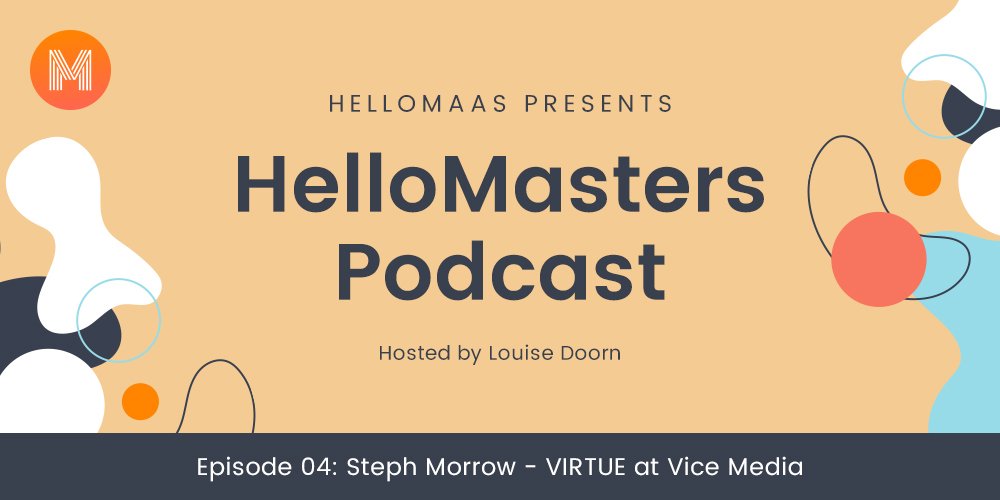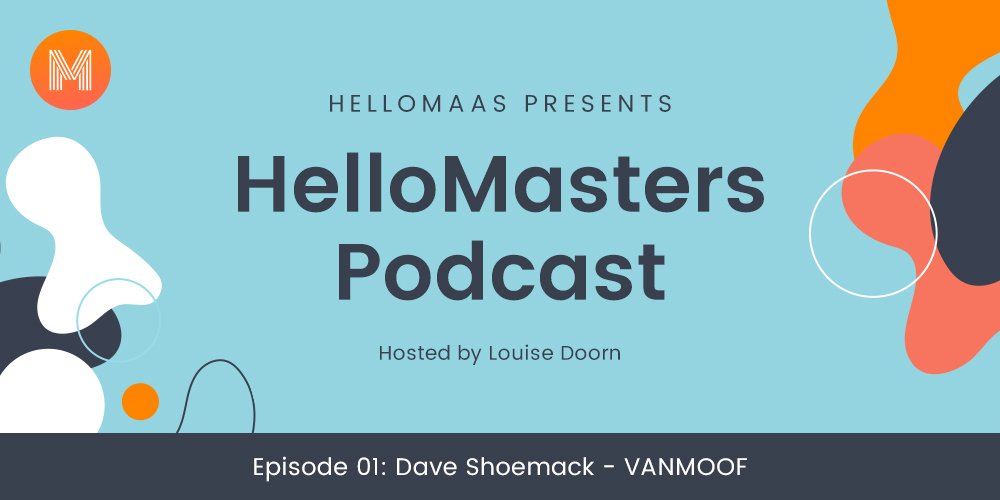HelloMasters Podcast Episode 04: Steph Morrow – VIRTUE Amsterdam, The Creative Agency By VICE Benelux

HelloMasters Episode 04
In the fourth episode of the HelloMasters podcast, Louise Doorn interviews Steph Morrow of VIRTUE – The Creative Agency by VICE Benelux about how marketing has changed in a global economy. Morrow started in New York as a brand strategist for KBS, then progressed to Sr. Brand Strategist at Anomaly. During her four-year tenure there, she relocated to Amsterdam, where she recently became Head of Strategy at VIRTUE. Over her career, Morrow has directed brand identity and led marketing strategy for companies such as American Express, Budweiser USA, and T-Mobile Netherlands. Over the course of her fifty-minute interview, she talks about her views on the agency model, influencer marketing, and team culture.
The Role Of Data
When asked if data is becoming overemphasized in agency marketing, Morrow is quick to make a distinction. “Our answers are data-informed, not data-led,” she says. Again and again, Morrow reiterates her stance that the best was to sell a company is a tell a good story with a human lens. She suggests that data should only be used to discover what marketers should not do. As Morrow puts it, “If you were exclusively data led you’d just be making porn and dog videos.”
Finally, Morrow offers a philosophy of humility in marketing. “What you’re making is not for you, it’s for other people. That’s the big difference between art and commercial work,” she says.
The Desires Of The Client
In order to best serve your client, you have to listen to both to their desires and the desires of their customers without inserting yourself between them. The two most important aspects of successful marketing are clear expectations, and boots on the ground. That way, when you ask for a potential customer’s attention, “there’s something on the other side that’s worth trading attention for.”
Curious how you can build your marketing team on-demand? You can connect with freelancers directly on our platform. Go to www.hellomaas.com/advisors and learn more.
Topics:
[00:00:00] Intro
[00:00:26] Introduction Louise
[00:01:05] Introduction Steph
[00:01:47] What does Steph really think of the Dutch
[00:04:15] Why did Steph move to Amsterdam and her advice for others
[00:06:32] Why did Steph decide to learn Dutch?
[00:08:16] Can you be a good marketer without speaking the local language?
“I don’t think you necessarily have to speak Dutch, but you do need a full understanding on how the culture works and how the brand fits into the culture.”
[00:09:45] Vice Media and Virtue are not the same
“We tend to work with clients who are looking to our editorial expertise and to our storytelling expertise and looking for that flavor… but not exclusively for clients looking for the Vice vibe.”
[00:12:53] Is data overemphasized in the marketing industry
“Our answers are data-informed not data-led.”
“The trick is to not simply create a mirror for what you’re seeing, but to create a true to god analysis and use that insight as a creative jumping-off point.”
“Data and technology should always have a human hand, a human guiding line.”
[00:14:43] Steph on shaking up the traditional agency model
[00:16:22] How would Steph define the best operating model?
[00:20:00] Steph’s advice to her 20-year-old past self
[00:21:20] How can in-house teams work best with external partners
“Be very clear on the division of roles and responsibility.”
[00:23:00] What are the biggest marketing changes of the last few years
“Execution is now more important than ever.”
[00:26:06] Influencer marketing and brand ambassadors
“Brand ambassadors have been around since the beginning of time… having people involved with your brand who have authority in the space that you’re trying to build credibility is massively important.”
[00:30:27] The rise of micro-influencers
[00:33:45] Culture and teams
[00:36:09] How to hire outside of your own bias
[00:39:04] Freelancing and digital nomads
[00:44:06] How startup advertising differs
“I’m a huge believer that UX can operate as your brand.”
[00:46:09] Predictions for 2019 in marketing













